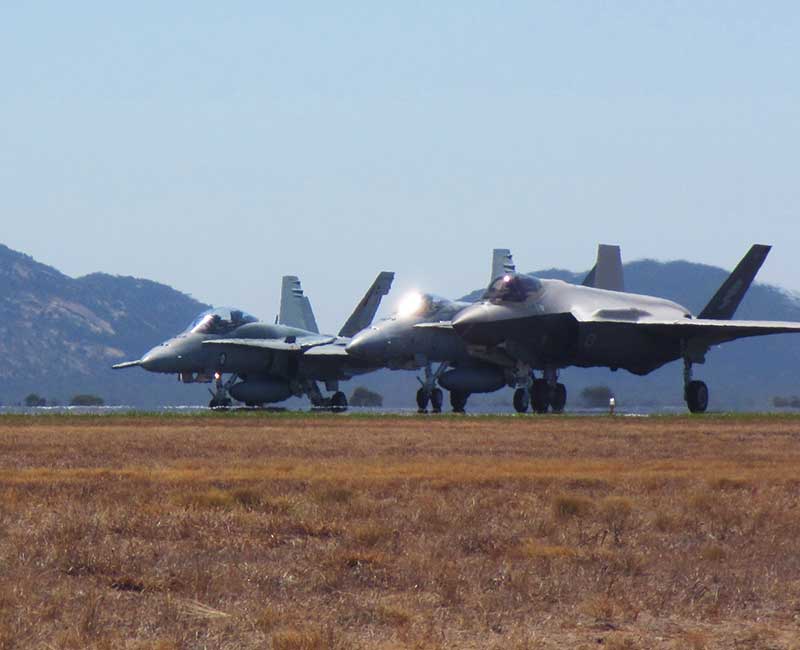Australia’s military is set to become a potent regional force for good

With its far-sighted new defence policy, the Australian Government has taken important steps to ensure we can better shape our own destiny. This is especially relevant in an uncertain post COVID-19 world, where the tide of globalisation and global alliances may have begun to ebb. In this scenario, nation states including Australia will need to play a greater role in asserting their own sovereignty, including defending their own borders and strategic interests.
Since Federation, Australia’s military contributions have typically supported larger allies (the United States in Vietnam, the United Nations in Korea, and coalition forces in Afghanistan and Iraq). On a per capita basis we also made significant contributions to the allied nations” causes in the two world wars.
That supporting role will change significantly as a result of the 2020 Defence Strategic Update, launched early this year in the context of increased regional uncertainty.
Beneath the defence bureaucratese is a sea change in Australia’s defence posture. It’s possibly the most significant change since Prime Minister John Curtin said in 1941 at the height of the Japanese threat to our shores: “Without any inhibitions of any kind, I make it quite clear that Australia looks to America, free of any pangs as to our traditional links or kinship with Britain.”
The Update says: “Australia’s strategic environment has deteriorated more rapidly than anticipated.” It refers to a “new strategic policy framework that signals Australia’s ability – and willingness – to project power and deter actions against us”, using “credible military force”.
This is not just empty rhetoric. The Government will spend an eye watering $270 billion in the coming decade on “more potent and longer-range combat systems”, including expenditure on cyber and space warfare capacity.
When I served in the Australian Army in the 1980s, I thought the Navy and Air Force were our poor cousins. Australia’s military contribution in that era had been dominated by the Army’s efforts in Vietnam. This is no longer the case. The RAN and RAAF are sophisticated organisations capable of defending our strategic interests. They are now set to become even more potent.
Since World War II Australia’s military, while small by world standards, has remained professional, capable and well regarded. Through the ANZUS treaty it developed to rely on the United States in a major military conflict and involve itself in land-based actions as part of a larger force. It has had limited capacity to project force by itself, though it has led significant regional stabilisation and transition operations in East Timor and the Solomon Islands.
The Government is now upgrading its middle-middle power military capability to an upper-middle power defence force. Within a decade the Australian Defence Force will have the capability to deter and punish the most sophisticated threat at a great distance from our shores, without having to rely on the United States.
The ADF will be able to do three things, on its own, which it could not do before:
- defend the air and sea approaches to Australia;
- project significant and integrated maritime (including limited amphibious capabilities) and air power to project naval and air power in our region, and
- provide meaningful augmentation to the US Navy to close shipping routes.
On this last point, the combined force of the US Navy and the US Marines is the most important strategic weapon any nation state has in the world today. With its 11 aircraft carrier task force groups, the USN can project unrivalled military power anywhere in the world at a time and manner of its choosing. By doing so it can shut down world trade routes – a potentially potent economic threat.
In the context of Australia’s more muscular and independent defence strategy, it is important to note that the Australian Government continues to value our “deepening alliance with the United States”. The difference now is we will have the capability to stand on our own two feet with a defence force that will make potential adversaries think twice about engaging Australia in conflict.
The Government is backing its policy with vast expenditures on state-of-the-art military platforms. The RAAF will be able to deploy up to 72 of the latest multirole combat aircraft, the superb US manufactured fifth-generation F-35 Lightening, which will carry the new long-range anti-ship missile. These Lockheed Martin US manufactured weapons have a range of 370 km – double the range of the current in service missile, the Harpoon. They can destroy any known adversary. Australia is acquiring 200 of these.
Critically, they will be supported by airborne refuelling aircraft and sophisticated electronic warfare aircraft allowing any strike force to control the battle space. This will be done in conjunction with maritime surveillance aircraft. These aircraft and accompanying systems will be “best of breed”.
The Navy will eventually have at its disposal 12 attack class submarines built by the French Naval Group in South Australia. They will represent a highly credible and effective deterrent against any other navy and a significant upgrade to the troubled and smaller Collins class fleet. Submarines are a significant combat multiplier and strategic weapon. In 1982, the Argentinian navy was bottled up in its home ports by two Royal Navy submarines during the Falklands war after the sinking of the cruiser, the General Belgrano, by a British submarine, HMS Conqueror.
Buying sophisticated military hardware is important, but it needs a clear eye to its use. And this is where the Government’s strategic thinking is correct.
Nineteenth century American naval strategist Alfred Thayer Mahan is not widely known outside naval circles. His theories on the role of sea power are still as relevant today as in 1890, when he published, “The Influence of Sea Power Upon History 1660-1783”. He identified the sea as a “great highway”. The strategic relevance of “chokepoints”, like the Malacca Strait north of Australia where 25% of all commercial shipping transits, cannot be overstated.
Relying on these strategic principles, in conjunction with sophisticated military hardware systems operated by highly trained personnel, Australia is set to be able to control its strategic environment for the first time.
This will provide stability and certainty in a region currently experiencing increasing levels of instability. It is in Australia’s national interest to make sure we continue this approach.
David Bell is with the strategy and advisory consultancy, CT Group.


